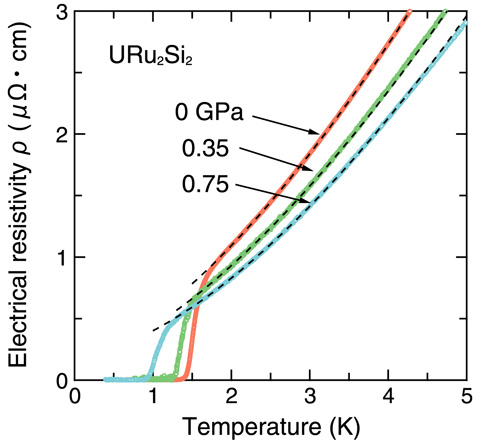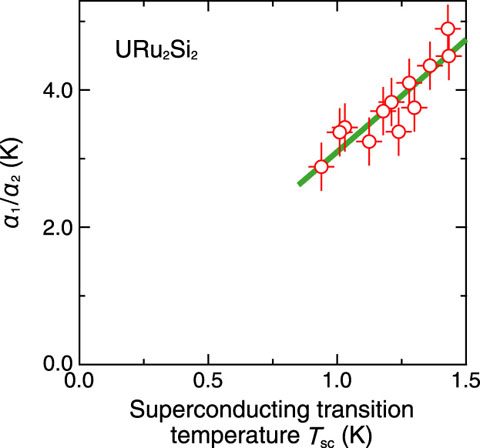
Fig.6-9 Temperature dependence of the electrical resistivity ρ in URu2Si2 at 0, 0.35, and 0.75 GPa

Fig.6-10 Analysis of the resistivity in URu2Si2 at high pressures
Superconductivity (SC) is a macroscopic quantum mechanical phenomenon. In conventional metals such as lead, two electrons are bound together by lattice vibrations in the superconducting state; however, lattice vibrations may not play an important role in the formation of superconducting pairs of electrons in strongly correlated electron systems such as copper oxides or heavy fermion compounds. The physical properties of SC in these systems differ from those in conventional superconductors.
SC of the uranium compound URu2Si2 has attracted much attention because of the novel superconducting properties of URu2Si2. SC is strongly related to the electronic state of an unknown ordered phase. The nature of this ordered phase has not been determined for more than 25 years. The only information available is that symmetry breaking of the electronic state occurs in the ordered phase. This phase is known as “hidden order.”
We measured the electrical resistivity ρ in URu2Si2 at high pressures, since the electronic property of the ordered state is reflected through the scattering of electrons. For example, the usual electron-electron scattering gives the T 2 term in the resistivity. We focus on the effects of pressure on the superconducting transition temperature Tsc and the electrical transport. As shown in Fig.6-9, the value of Tsc decreases with increasing pressure. We analyze the temperature dependence of ρ using the expression ρ=ρ0+α1T +α2T2. We assume that ρ is the sum of the T-linear resistivity related to the unusual scattering of electrons and the usual T 2-term. We determine the pressure dependencies of α1 and α2 from the fit of the data with the expression, shown by the dotted lines in Fig.6-9.
α1/α2 and Tsc are suggested to have a linear relation, as shown in Fig.6-10. The pressure dependence of α2 is very weak; hence, the value of Tsc depends primarily on the coefficient α1. This suggests a strong correlation between and a common origin for anomalous electron scattering and SC. This finding is the basis for further studies on the hidden and SC states in URu2Si2.
Electrons in actinide compounds also exhibit many interesting physical phenomena. We will continue to search a new concept to understand these phenomena.